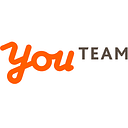Grow Software Development Team Efficiently: Exploring Remote Talent and Hiring Models
The landscape of small business growth has evolved significantly, with globalization playing a crucial role. In this article, we will delve into the topic of rapidly expanding software development teams using remote talent and compare different hiring models. By embracing remote work and considering alternative talent acquisition strategies, companies can effectively scale their teams while maintaining efficiency and flexibility.
How Globalization Streamlines the Hiring Process:
The rise of remote work and globalization, further accelerated by the pandemic, has allowed US companies to hire tech professionals from around the world in a matter of days. This increased hiring speed and expanded talent pool are particularly beneficial for startups aiming to launch products quickly or secure new investments. Additionally, companies can delegate smaller development projects globally, freeing up resources for larger initiatives or accessing local talent.
Comparing Hiring Models for Software Development Teams
Below, we analyze four team expansion models, along with the traditional in-house hiring approach, and assess their hiring speed and unique characteristics.
Freelance
The freelance hiring model involves engaging individual contractors on a project basis. Freelancers are independent professionals who offer their services for short-term projects and tasks.
- Fastest hiring option, suitable for short-term projects and limited budgets.
- Access to a global talent pool, but output quality may be compromised.
- Lack of job security for freelancers and potential risks of data loss.
In-house Hiring
The in-house hiring model involves recruiting and hiring full-time employees to work directly within the company’s premises.
- The lengthy process involving talent search, evaluation, and cultural fit assessment.
- Provides greater control, collaboration, and investment in core team development.
- Limited talent pool and high operational costs.
Outsourcing
The outsourcing hiring model involves partnering with external agencies or companies to handle specific tasks or projects.
- Requires finding and vetting suitable agencies, which can be time-consuming.
- Offers dedicated development teams but limited direct communication.
- Can be cost-effective for non-technical companies focused on core business aspects.
Staff Augmentation
The staff augmentation hiring model involves hiring full-time software engineers from outsourcing agencies to work as an extension of the in-house team.
- Accelerates the development process and reduces technical debt.
- Provides full control over the development process and direct management of contractors.
- Requires sourcing and hiring time if the outsourcing agency lacks available talent.
Staff Augmentation On Demand via YouTeam
Hiring contractors via the YouTeam model is a specific type of staff augmentation that leverages a platform like YouTeam to connect with and hire software engineers from multiple outsourcing agencies.
- Utilizes full-time employed software engineers from multiple outsourcing agencies.
- Enables rapid hiring, typically within a week, and offers a larger talent selection.
- Maintains control over the development process, similar to staff augmentation.
Conclusion
Choosing the most suitable hiring model for expanding software development teams depends on specific employer requirements and project scale. While freelance options offer quick access to talent, they may lack long-term commitment. Outsourcing agencies provide dedicated teams but may require significant preparation. In-house hiring grants greater control but can be time-consuming and costly. Staff augmentation and YouTeam’s on-demand model offer a balance of control and speed. By carefully considering these options, companies can effectively scale their software development teams and achieve their goals efficiently.
